
Let's Talk Knife Care: How Do You Care For Your Knife
Keeping your knife sharp is important. It helps you cut better and more easily. However, a dull knife can also be dangerous; you won't get the same control over it, which puts you at risk of cutting yourself or others accidentally. Whether you're just starting to learn how to use a kitchen knife or have been an avid chef for years, there are ways to keep your knives sharp and in tip-top shape that won't take up much time or effort.
How to Clean Your Knife
The blade of your kitchen knife is the most important part. It needs to be kept clean, sharp, and rust-free for optimal performance. And because it's your responsibility to keep it that way, we've put together a few tips on how to clean your knives.
Wash Your Knife by Hand
Wash your knife by hand to keep it clean and extend its life. Use warm, soapy water to wash away any food particles that can damage the blade.
Do Not Use a Dishwasher
Although many people do this without problems, washing machines are hard on knives because they use so much water and high temperatures that can warp handles, dull blades, and rust steel parts (such as rivets). Dishwashers do not thoroughly clean knives after each use either—they leave behind food particles that can cause rusting and other problems if you don't wash them well before putting them away again.
Do Not Use a Scouring Pad or Steel Wool
Scouring pads and steel wool are abrasive materials that can scratch and dull your knife's blade over time, making it more dangerous to use than before you cleaned it.
Do Not Use a Knife Sharpener
Knife sharpeners are designed for honing and sharpening blades, not cleaning them — they can damage the blade and ruin any existing edge on your knife before you even begin using it.
How to Store Your Knife Properly
You want your knife to last as long as possible, so you want to ensure it's stored properly. There are a few things you can do to help ensure that your knife will stay in tip-top shape:
Store in a Dry Place
If you're storing your knife in a drawer, make sure the drawer isn't humid or wet. If you're storing your knife in a kitchen cabinet, make sure the cabinet has good airflow and is not humid.
Store in a Blade-Down Position
This will help keep the blade from getting dulled by other objects in the drawer or cabinet if they rub against it while it's being stored.
Store in a Secure Place
If you have kids or pets who might get into your kitchen cabinets, ensure you lock them away when you're not using them so they don't accidentally cut themselves on an exposed blade.
Store in a Covered Case
This will protect against rust and corrosion, damaging your knife over time and making it less effective at cutting food items like meats or vegetables.
Store in a Place With Low Humidity and Neutral pH
Humidity can cause rust on metal objects like knives over time, so store them somewhere where little moisture is present.
Store in a place with a neutral pH so that acids don't eat away at the metal components inside the handle or blade over time (this includes contact with cleaning agents like bleach or vinegar).
Use a Cutting Board
Cutting boards are not just a way to protect your countertops from knife damage. They are also a great way to protect your knives from getting dull.
The main benefit of using a cutting board is that it protects your knife from getting damaged by other metals or hard substances like glass or granite. This can help keep your knife sharper for longer, saving you money on buying new knives every few months.
Cutting boards can be made from various materials — wood, plastic, bamboo, or even glass. Wood is generally considered the best material because it's durable and will last longer than other materials. It also doesn't absorb liquids or odors like some other materials, making it easier to clean and maintain over time. But there are benefits to using each cutting board too.
Wood cutting boards prevent cross-contamination because they're nonporous (so bacteria can't grow). They're also easy to clean since bacteria isn't absorbed into them as it would be with plastic or other materials. And since wood is porous, it allows water to soak through easily, which helps prevent food from sticking when you cut on the board itself (which is good news for your knives).
Plastic cutting boards are also non porous, so they don't absorb liquids or odors. However, unlike wood ones, plastic boards can sometimes scratch if you're not careful with them — so try not to use metal utensils.
Oil Your Knife
Oiling your knife is essential for keeping it in optimal condition. A well-oiled knife will look good and perform with high efficiency. There are various ways of applying oil to a knife. The most popular methods include using an oil cloth, rag, or specialized oiling devices such as a rod or stone.
If you've been using your knife for a while and have noticed the blade starts to rust or discolor, it's time to oil the blade. This will help prevent further rusting and keep your knife in good condition.
The first step of this process is applying oil to the blade of your knife with either a soft cloth or paper towel. Do not apply the oil directly onto the sheath, as this can cause damage over time! Oil should only be applied to areas where metal comes into contact with air, such as blades or points on your knives.
In addition, if you notice any buildup on your blade that could cause issues like rusting down the line, then definitely give it some extra attention now by safely removing any built-up dirt particles before applying any additional oils or coatings onto them.
Here's why you should oil your knives:
It Helps Your Knife Last Longer
This is especially important if you use your knives often or expect them to last a long time. Oiling regularly will keep the blade from rusting and help prevent any other damage to the metal or handle.
It Makes Your Knife Easier to Clean
Some types of oil can be easy to wipe away with a damp cloth, while others may require more effort, but either way, it's better than having to scrub at dried food stuck in the crevices of your knife.
It Keeps Your Knife Looking Nice and Shiny
To keep your knives looking their best, all you have to do is wipe them down with a soft cloth once in a while.
Always Keep Your Knives Sharp
A sharp knife is a safe knife. Dull knives are more dangerous than sharp ones because they require more force to cut through things, making them more likely to slip. Sharpening is also much easier if you have a good angle on your edge.
To keep your knives sharp, you need to sharpen them regularly. Most people do this about once every six months, but it depends on how often you use your knives and how hard you work them.
The best way to determine when your knives need sharpening is when they don't work as well as they used to. You'll feel it when the blade bounces off the food or catches in the material — like trying to cut through thick paper with a dull pencil.
Honing vs. Sharpening
The first thing to do when sharpening a knife is to remember that sharpening steel is not the same as honing steel. You need to understand the difference between the two and how they work before you can sharpen your knives properly.
A sharpening steel is used to straighten out the edge of your blade and remove any burrs or chips that may have formed on it during use. This will help you keep your knife sharp for longer periods, but it doesn't make it sharper, so you will still need to use a whetstone or other sharpener at some point in the future if you want your blade to be effective again.
A honing steel doesn't sharpen your knife either; instead, it just realigns the edge by removing small amounts of metal from both sides so that they sit perfectly parallel again (using a whetstone). This means that when you use your knife after honing steel, it will cut things much more smoothly.
A knife is only as sharp as its blade, so if you want to keep your knives in good condition, they must be sharpened regularly. There are several ways to do this, but the most popular is using a whetstone, which uses friction to sharpen the blade. You can also use an electric sharpener or a machine designed specifically for this purpose.
Honing steels are not designed for sharpening knives but for maintaining them in good condition. If you look closely at your knife, you'll notice two sides: one side has ridges, and one side has grooves running along its length. This is where the process starts: if you run your knife down one side of the steel (the ridges) and then across the other side (the grooves), you're realigning its edges so that they sit perfectly parallel again.
How to Sharpen Your Knife with a Whetstone
Whetstones are sharpening stones generally made from water-based minerals like silicon carbide or aluminum oxide. They sharpen by removing microscopic amounts of metal from both sides of the blade at once, which makes them ideal for maintaining an already sharp edge.
The most common types of whetstones are oil stones and water stones, but there are also diamond stones that can be used with either oil or water, as well as ceramic stones which aren't typically used for home use but tend to be found in professional kitchens.
If you have never used a whetstone before, you may wonder how to use one correctly. Here's what you need to know:
Step 1: Preparing Your Whetstone
You will need to soak your whetstone in water for about one hour before using it for sharpening purposes. This softens up the stone so it won't scratch your knife when you run it over your blade. It also makes it easier to get a good grip on the stone while sharpening your knife.
Step 2: Clean the Knife
Clean off any dirt from the blade before starting work on it. Dirt can get into the grooves of your blade and prevent it from being smooth enough for you to sharpen properly. Take a wet rag and wipe all dirt off your knife before starting work on it.
Step 3: Sharpening the Knife
After soaking your stone, place it on top of something stable (such as a table), and then place your knife on top of the wet stone. Now hold both ends of the handle while pressing down firmly with one hand (this is called "pulling back"). Now slide your other hand from the top towards the bottom of the blade, using just a little bit of pressure. Repeat this process about 10 times, then move on to another section of your knife until you've gone through all areas once.
Now that you have sharpened one side of your blade, flip it over so you can sharpen the other side. This time, pull back from the tip to where you previously sharpened; this may take some time depending on how dull your knife was before sharpening. Once again, repeat this motion about 10 times for each part of your knife before moving on to another section and repeating this process.
Conclusion
A well-maintained knife can be a real asset in the kitchen. It will keep you safe and make your food preparation much easier. And when you know how to care for it properly, it's something that will last you for years.
Sources
https://healthykitchen101.com/blog/how-to-care-for-your-knives/
https://onlyknife.com/how-to-oil-a-knife/
https://gearjunkie.com/knives/how-to-sharpen-knife-whetstone
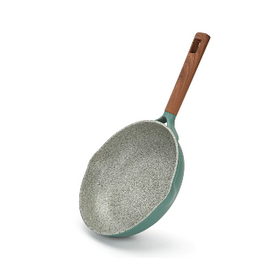
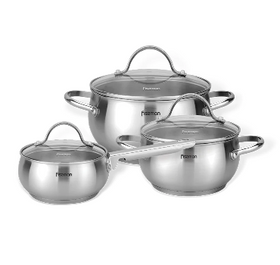
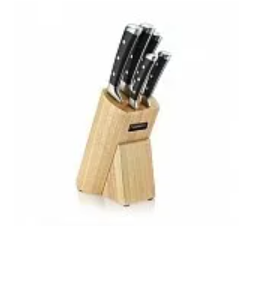
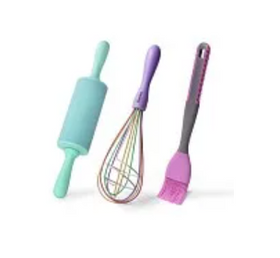

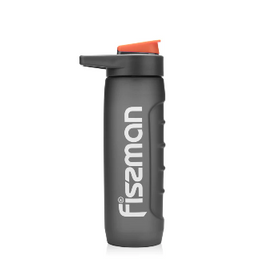
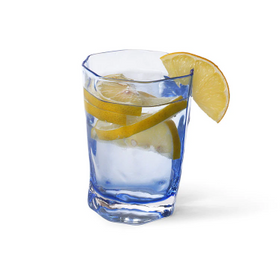





























Comments
Leave a comment